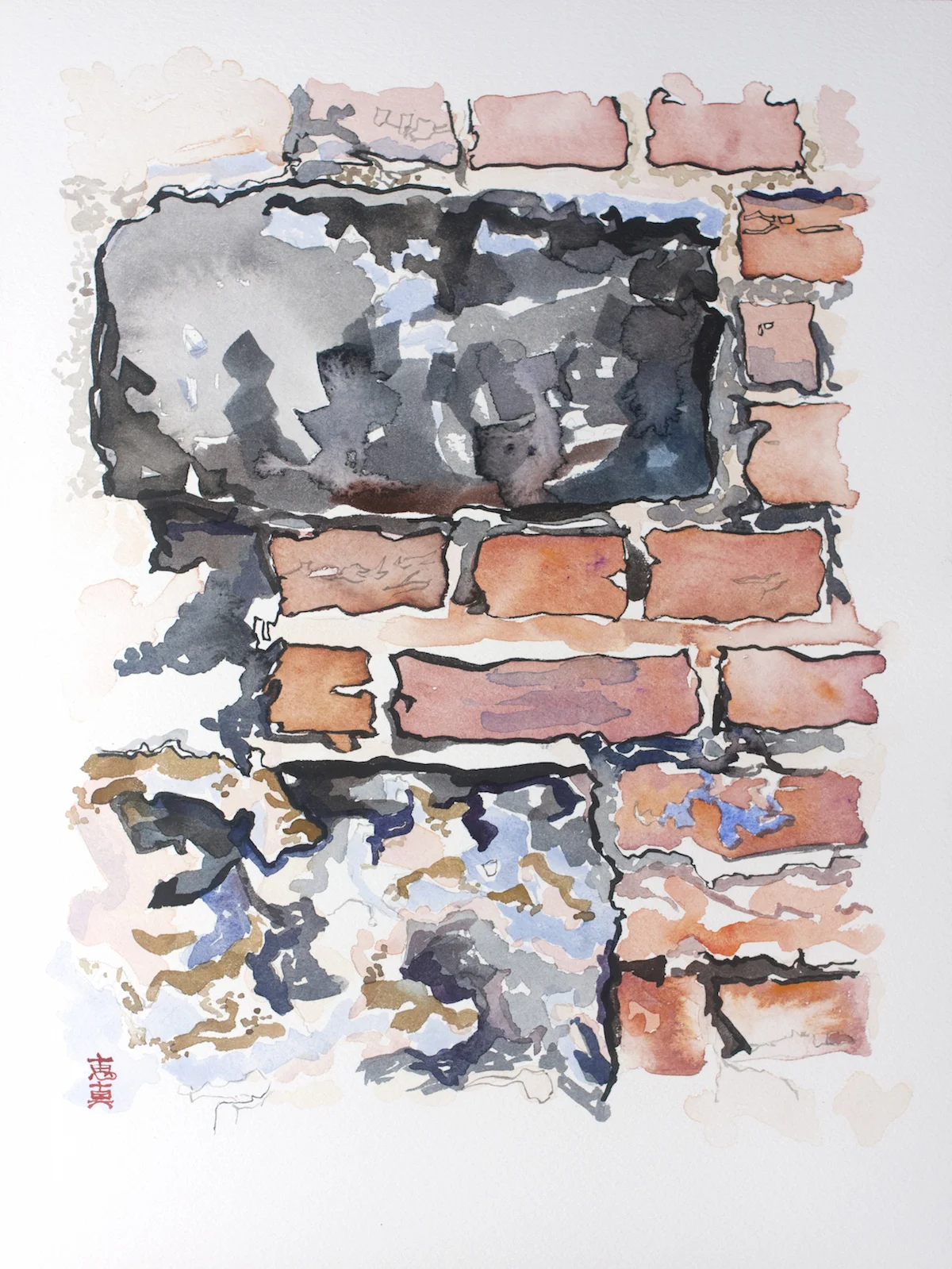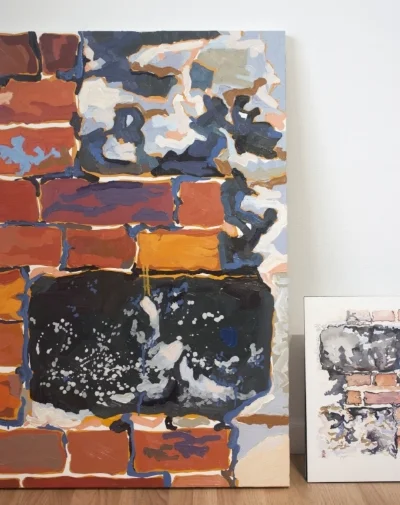When thinking about what to paint for an upcoming auction event, I went to my folder of "paint me" photo I've taken while traveling over the past few years - many of which are stone or brick walls. Beauty in everyday things is something I treasure and often miss, being distracted or rushed, but when I travel and have fewer distractions I look around and notice.
If I remember correctly, this wall was in High Wycombe, west of London.
Painting Upside Down
No, I'm not talking about painting and handstands. If that were the case, I'd have my own act in a circus. You may notice the two paintings are different. I sometimes paint images upside down to focus on shapes and colors. For example, take the color of brick. The mind says "a brick wall = red," but eyes say "but I see yellow in the brick." It helps to trust your eyes to see real color relationships and you won't end up with a flat, paint-by-number painting. There's a rainbow of colors even in one individual's flesh color. In the end, I kept one painting upside down the way I painted it, while the other was flipped because it seemed to belong right side up.
Process
Oil painting is no small feat, especially if not done daily - the setup and canvas preparation is extensive. Once you have your stretched canvas, the process before the painting begins looks something like:
- Prepare canvas: Add gesso to prime the canvas.
- Wait: Layer needs to dry before adding the next.
- Repeat step 1.
- Repeat step 2.
- Repeat step 3.
- Repeat step 4.
- Etc.
Obviously the "wait" steps can be active - doing lesson prep, grading, cooking, sleeping, etc. This time during some waiting steps, I decided it would be an interesting experiment to try the same subject (my wall) in watercolor and ink on paper to see how it compares to oil on canvas.
The watercolor process was incomparably faster mainly due to drying time between layers - you can actually watch the paint dry!
Watercolor has more of an independent response than oil painting because watercolor changes as it dries. I've learned to enjoy the response-effect of water-based mediums, and how there is chance involved. Once the pigment is placed, there is little wiggle room to make changes so the decisions need to be final before the brush hits the paper. It forces the painter to be decisive. The more you keep working at the same part of a watercolor painting, the messier it gets so it's important to learn when to stop.
On the other hand with oil painting, the moment I put paint on the canvas I know the result. The pigment goes where my brush directs, and no further unless I intentionally add more medium. Generally, oil paint is opaque so there is flexibility to make changes by painting over the previous layers. In other words, perfectionist-me could keep working on something FOREVER.
The Verdict: Watercolor vs. Oil
I thought this comparison project would help me decide if I like oil or ink/watercolor more, but it simply confirmed I love both. I'll continue to work with ink for the most part, but I'll keep up some oil painting here and there.
Why? The spontaneity in watercolor/ink balances my super-planner personality well. While it's hard to do, I believe it's a good thing to let go of control!
Side-by-side to get a sense of scale of the two paintings


